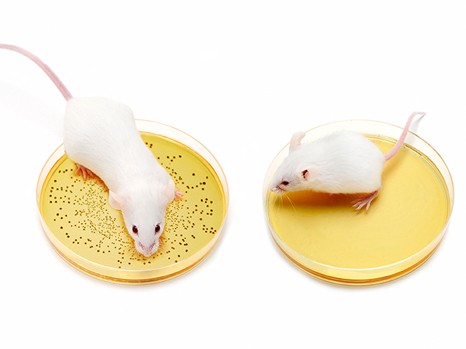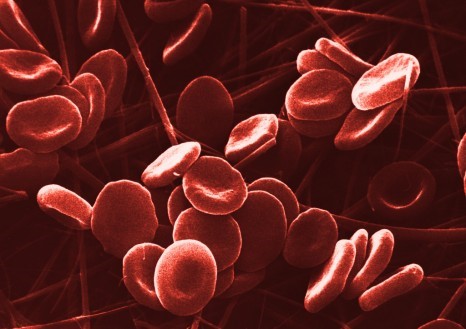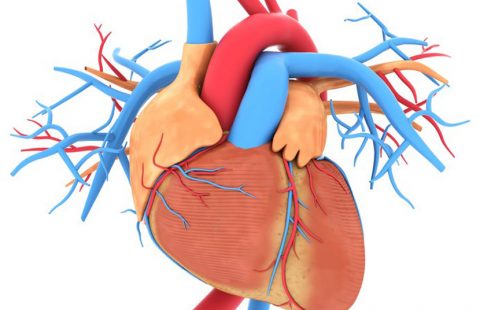The intestinal microbiota is necessary to ensure optimum postnatal growth and contributes to determining the size of adult individuals, notably in the event of undernutrition. The key element in this relationship is Insulin-like Growth Factor-1 (IGF-1), whose production and activity are in part controlled by the microbiota. This has recently been demonstrated in mice by scientists at the Institut de Génomique Fonctionnelle de Lyon (CNRS/ENS Lyon/Université Claude Bernard Lyon 1), the Laboratoire CarMeN (INSERM/INRA/Université Claude Bernard Lyon 1/Insa Lyon)[1], and Unit BF2I (INRA/INSA Lyon)[2]. These findings, published on 19 February 2016 in Science, and obtained in collaboration with researchers from the Czech Academy of Sciences, also show that some strains of intestinal bacteria belonging to the Lactobacillus plantarum species may favor the postnatal growth of animals, thus offering a new opportunity to combat the harmful effects of chronic infantile undernutrition.
During the juvenile phase, animal growth is influenced by interactions between nutritional intake and hormone signaling. Acute undernutrition for a few days in the mouse results in marked weight loss, which has been widely documented and attributed—among other factors—to a disturbance of the intestinal microbiota. Chronic undernutrition will result in the onset of growth retardation. The complex mechanisms underlying this retardation involve a state of resistance to the action of growth hormone secreted by the pituitary, an endocrine gland situated beneath the brain, which normally stimulates the production by numerous tissues of growth factors such as Insulin-like Growth Factor 1 (IGF-1). This tissue resistance to growth hormone causes a drop in the production of IGF-1, leading to a delayed development and reduced size of an individual compared with age. Until now, the influence of the microbiota on these mechanisms remained unknown.
Under different nutritional conditions, the scientists compared the development of standard mice with a normal microbiota with that of so-called germ-free mice without intestinal microbiota. They were able to demonstrate, for the first time, the role played by the bacteria in the intestinal flora in controlling growth.
Whether under a normal diet or in a situation of undernutrition, the researchers observed that the germ-free mice had not only gained less weight but were also smaller than their standard counterparts. In germ-free specimens, numerous bone growth parameters such as bone length or thickness were reduced, without bone mineral density (the amount of calcium in the bones) being affected. In addition, the team showed that the germ-free mice displayed lower IGF-1 levels, with less activity, than the other mice. By interfering with the activity of IGF-1 in normal mice, or by injecting IGF-1 into the germ-free mice, the scientists determined that the intestinal microbiota favored growth by influencing the production and activity of this important growth factor.
Previous studies[3] in Drosophila had demonstrated the ability of bacterial strains in the Lactobacillus plantarum species to favor postnatal growth in the event of chronic undernutrition. The researchers therefore analyzed the growth of so-called monocolonized mice (i.e. containing a single bacterial strain as their microbiota). They thus demonstrated that mice monocolonized with a specific Lactobacillus plantarum strain (called LpWJL), and reared under standard nutrition or chronic undernutrition, produced more IGF-1, gained more weight and grew better than germ-free mice or those monocolonized with other strains. These results thus prove that certain strains of Lactobacillus, including LpWJL, are able to favor postnatal growth in mammals.
[1] Unité Cardiovasculaire, Métabolisme, Diabétologie et Nutrition (CarMeN).
[2] Unité Biologie Fonctionnelle Insectes et Interactions.
[3] Lactobacillus plantarum promotes Drosophila systemic growth by modulating hormonal signals through TOR-dependent nutrient sensing, Gilles Storelli, Arnaud Defaye, Berra Erkosar, Pascal Hols, Julien Royet, François Leulier, Cell Metabolism (2011) 14(3):403-414 and Pathogen Virulence Impedes Mutualist-Mediated Enhancement of Host Juvenile Growth via Inhibition of Protein Digestion. Berra Erkosar, Gilles Storelli, Mélanie Mitchell, Loan Bozonnet, Noémie Bozonnet, François Leulier. Cell Host and Microbe (2015) 18(4):445-55.


